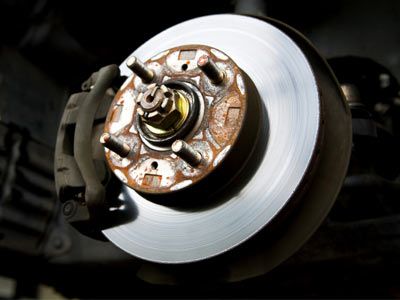When we look at buying a car, we usually check out the gas mileage, the odometer, the standard equipment and, of course, the price. If we're drooling over a performance car, we read up on speed and power characteristics as well -- 0 to 60 miles per hour (96.6 kilometers per hour) in so-many seconds with this-many brake horsepower and that-much torque. We rarely spare a thought for braking systems, because we presume (correctly, as it turns out) that the law requires manufacturers to engineer vehicles to stop within a certain safe distance.
The National Highway Traffic Safety Administration (NHTSA) provides stopping distance requirements and tests for all vehicles. Assessments for light vehicles comprise a cold effectiveness test, a high-speed test, a fade and recovery test and experiments to evaluate stopping distance given the partial failure of a subsystem. Hydraulically braked medium and heavy vehicles differ from light vehicles in that their tests include scenarios involving completely failed systems.
Advertisement
However, braking amounts to more than a simple matter of pushing a pedal. Drivers must consider the feel of the brakes, their balance, whether they work differently warm and cold, how effectively they perform in wet versus dry conditions and whether they fade over time.
Most of us have heard the rules of thumb about multiplying our speed by a certain number of car lengths, or of maintaining a space cushion of 2 to 3 seconds from the car in front of ours. Nothing can substitute, however, for really getting to know the distinctive braking characteristics of your own vehicle, from the grip in the tires to the thump and pulse of the anti-lock braking system (ABS) kicking in.
Ultimately, nothing compares to getting the car up to speed and then slamming on the brakes. In this article, we'll show you how the pros test their brakes and how you can apply their methods to your own car or truck.
Advertisement



